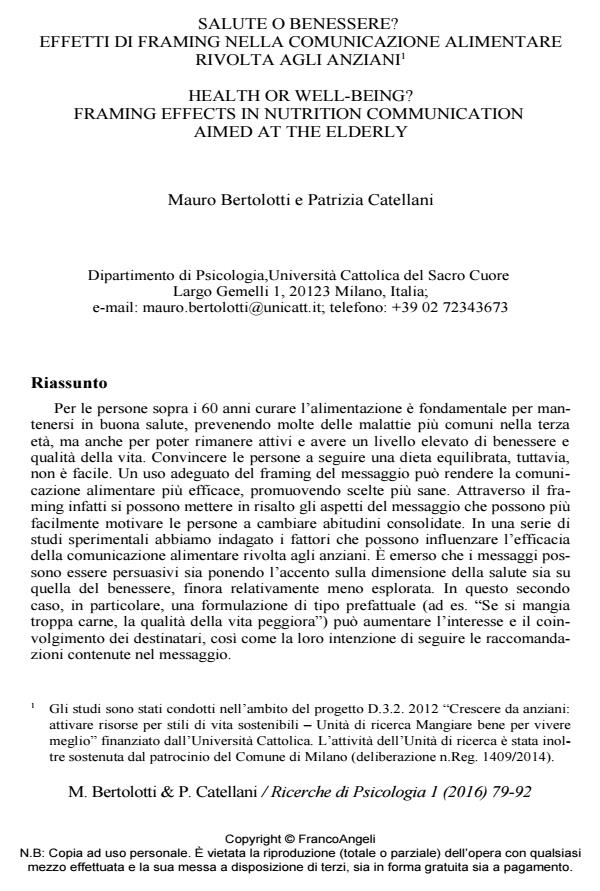Salute o benessere? Effetti di framing nella comunicazione alimentare rivolta agli anziani
Titolo Rivista RICERCHE DI PSICOLOGIA
Autori/Curatori Mauro Bertolotti, Patrizia Catellani
Anno di pubblicazione 2016 Fascicolo 2016/1
Lingua Italiano Numero pagine 14 P. 79-92 Dimensione file 68 KB
DOI 10.3280/RIP2016-001006
Il DOI è il codice a barre della proprietà intellettuale: per saperne di più
clicca qui
Qui sotto puoi vedere in anteprima la prima pagina di questo articolo.
Se questo articolo ti interessa, lo puoi acquistare (e scaricare in formato pdf) seguendo le facili indicazioni per acquistare il download credit. Acquista Download Credits per scaricare questo Articolo in formato PDF

FrancoAngeli è membro della Publishers International Linking Association, Inc (PILA)associazione indipendente e non profit per facilitare (attraverso i servizi tecnologici implementati da CrossRef.org) l’accesso degli studiosi ai contenuti digitali nelle pubblicazioni professionali e scientifiche
Per le persone sopra i 60 anni curare l’alimentazione è fondamentale per mantenersi in buona salute, prevenendo molte delle malattie più comuni nella terza età, ma anche per poter rimanere attivi e avere un livello elevato di benessere e qualità della vita. Convincere le persone a seguire una dieta equilibrata, tuttavia, non è facile. Un uso adeguato del framing del messaggio può rendere la comunicazione alimentare più efficace, promuovendo scelte più sane. Attraverso il framing infatti si possono mettere in risalto gli aspetti del messaggio che possono più facilmente motivare le persone a cambiare abitudini consolidate. In una serie di studi sperimentali abbiamo indagato i fattori che possono influenzare l’efficacia della comunicazione alimentare rivolta agli anziani. È emerso che i messaggi possono essere persuasivi sia ponendo l’accento sulla dimensione della salute sia su quella del benessere, finora relativamente meno esplorata. In questo secondo caso, in particolare, una formulazione di tipo prefattuale (ad es. "Se si mangia troppa carne, la qualità della vita peggiora") può aumentare l’interesse e il coinvolgimento dei destinatari, così come la loro intenzione di seguire le raccomandazioni contenute nel messaggio.
Parole chiave:Invecchiamento, alimentazione, comunicazione prefattuale, salute, benessere
Mauro Bertolotti, Patrizia Catellani, Salute o benessere? Effetti di framing nella comunicazione alimentare rivolta agli anziani in "RICERCHE DI PSICOLOGIA " 1/2016, pp 79-92, DOI: 10.3280/RIP2016-001006